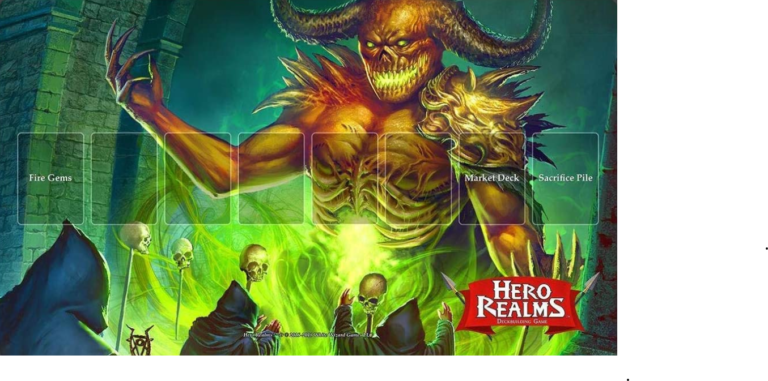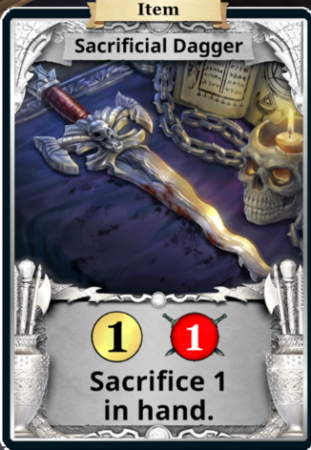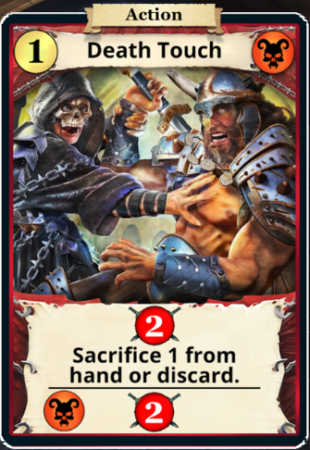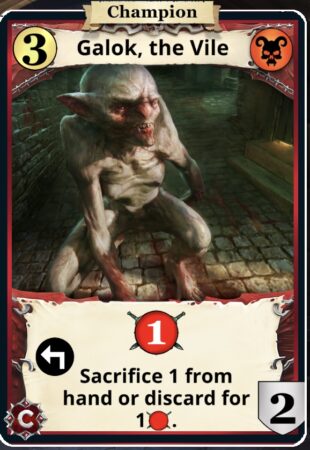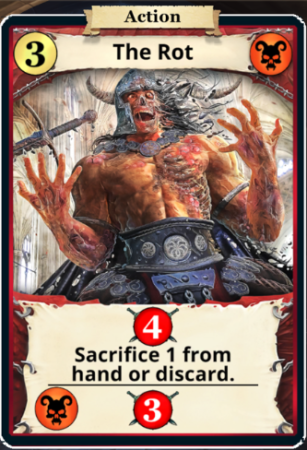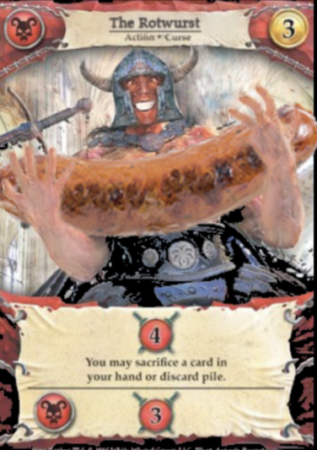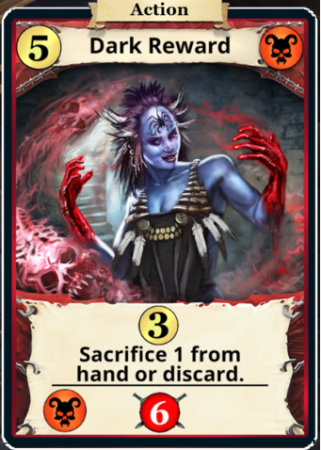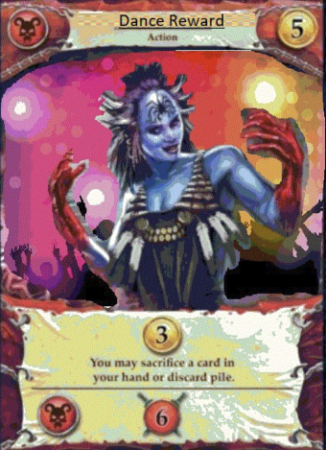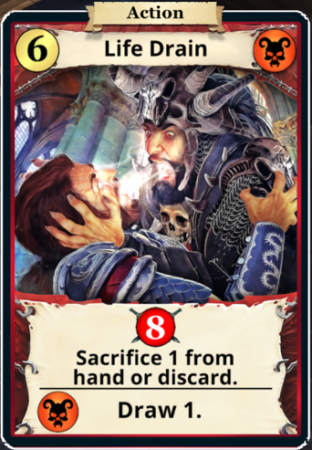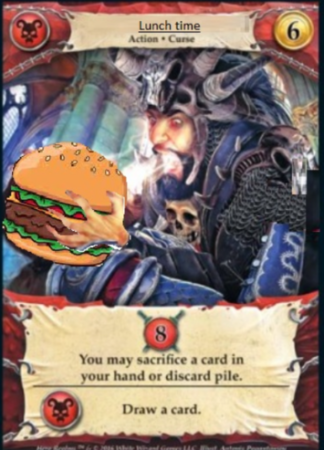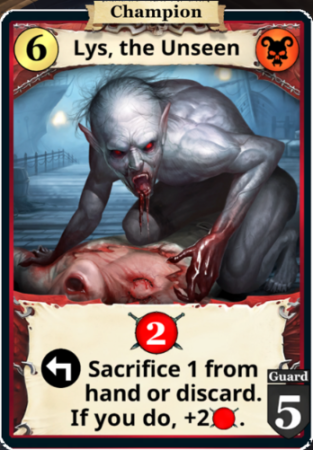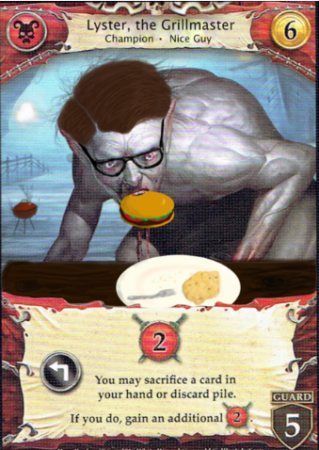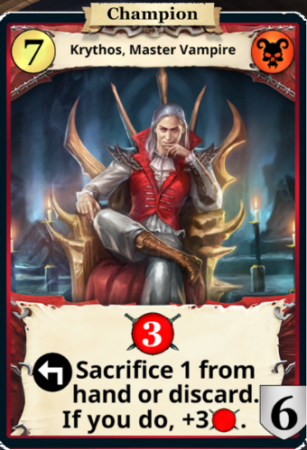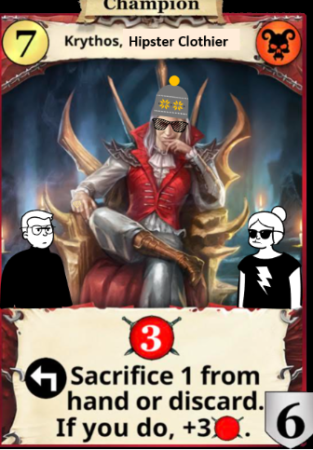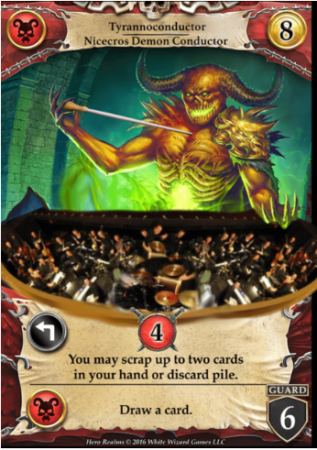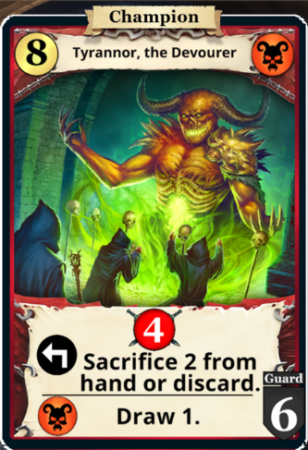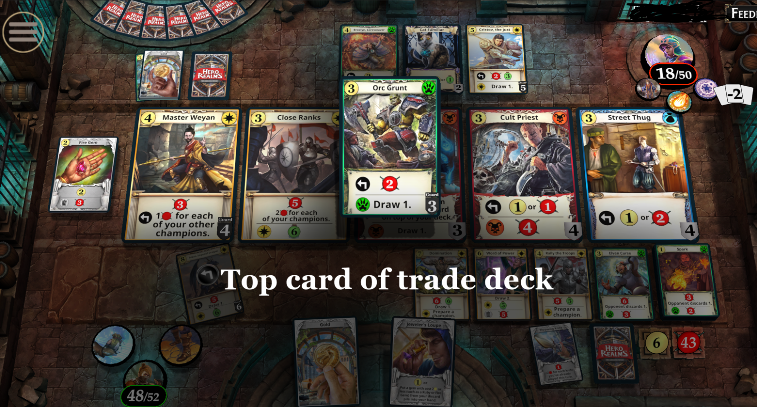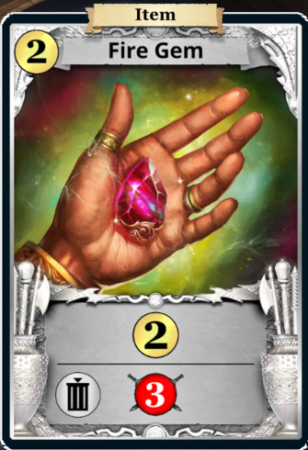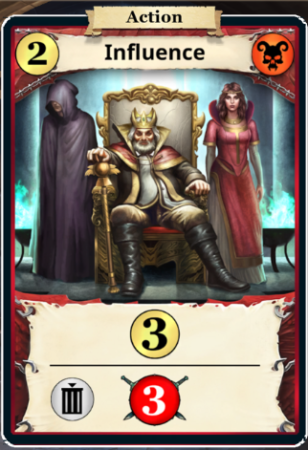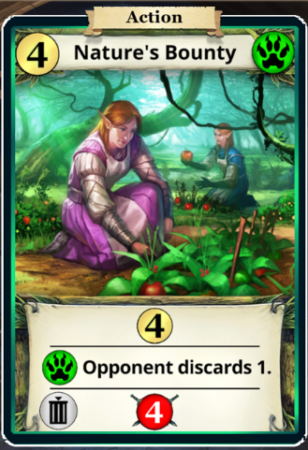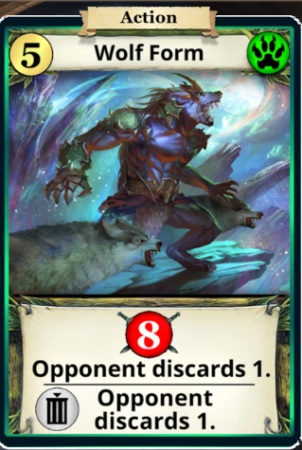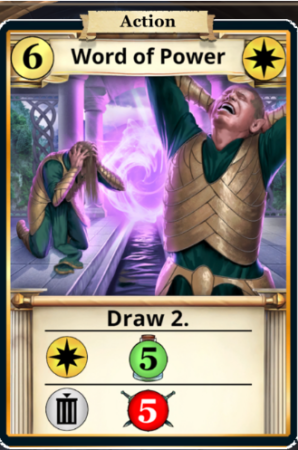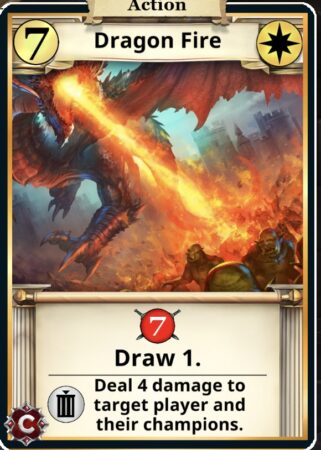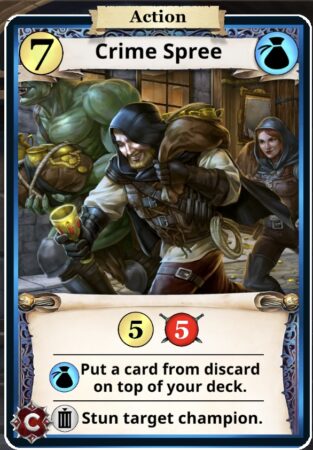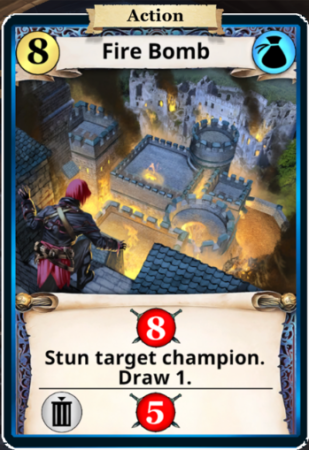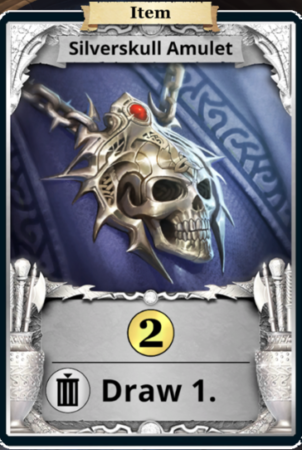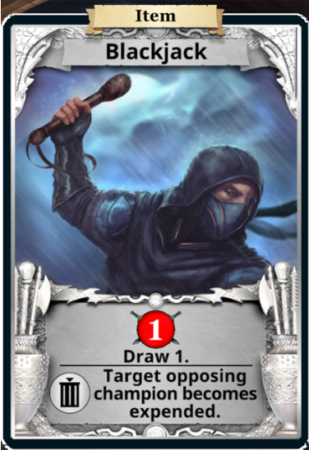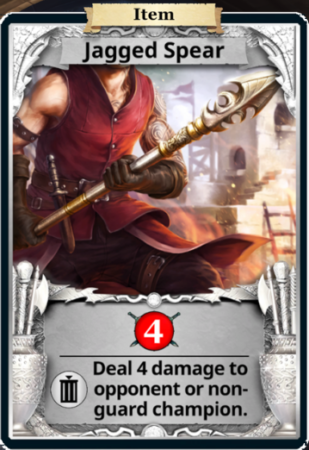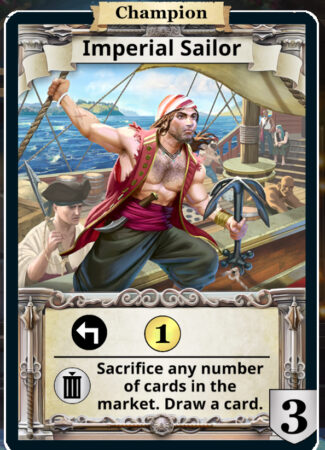*Note: This article is now edited to include the three sacrifice cards from the Call to Arms expansion. These cards have a little red “C” badge on the bottom-left of the image.
The Hero Realms digital game has been out for a while now. There are hundreds of players enjoying this beautiful deckbuilder from Wise Wizard Games. I played a few thousand games in the Beta, and since the launch of Hero-Helper (https://hero-helper.com) I’ve clocked 3300 games to date. In all of those, I’ve come to think about the importance Sacrifice plays in a successful game. This article will look at the various methods of the Sacrifice mechanic in the digital game.
Disclaimers: If you haven’t read agentc13’s article on Card Types, you should go read that. That provides a basic fundamental understanding of Sacrifice cards. Also, if you’re coming to Hero Realms from Star Realms, the nomenclature changes from “Scrap” to “Sacrifice.” However, on the Discord, you’re likely to encounter both terms. Just keep in mind that the terms are synonymous.
Quick Refresher: Why Sacrifice Again?
So you skipped Tim’s article huh? For shame. Regardless, a quick TL;DR of the importance of Sacrifice is here for your impatience! You generally want to Sacrifice cards from your deck to increase the effectiveness of your deck. The less junk you have in your deck, the less junk you have to draw. Gold is important in the beginning stages of a game, but much less so in the end game. Hero Realms is a deckbuilder, so you want to build yourself a lean, mean, engine that will give you a victory. If you keep your deck clogged, you generally lose to a player who is able to slim up their deck.
Tip: A Cleric craves Sacrifice to get up a champion wall up and running. A skillful player will generally try to prevent a Cleric from acquiring a single Sacrifice card, keeping their deck filled with all of their starter cards.
The Types of Sacrifice Cards
There are three types of Sacrifice cards in the game: cards that allow you to sacrifice another card you own cards (i.e., “Others-Sacrificing”), a card that allows you to sacrifice cards in the Market (i.e., “Market Deck-Sacrificing”), and Self-Sacrificing cards. These are broken down in the table below. The number in parenthesis is how many of these cards are available in a game.
***Disclaimer #2***
The one-time use, class-specific abilities are SS cards as well, and so is the Half-Demon Ancestry Demon Blood. However, the use of these abilities are well beyond the scope of this article. I am, however, including the Thief Silent Boots armor upgrade, as this single card in these sets that allows a player to sacrifice from the Market Deck. As a reminder, the Market Deck is not the same as the Market; the Market is the row of cards players may purchase to build their decks, while the Market Deck is the pool of available cards that populates the Market after a purchase is made.
| Others-Sacrificing (OS) | Market Deck-Sacrificing (MS) | Self-Sacrificing (SS) | |
|---|---|---|---|
| Base Set | Death Touch (2), The Rot (2), Dark Reward (1), Life Drain (1), Lys the Unseen (1), Krythos Master Vampire (1), Tyrannor the Devourer (1) | Silent Boots (1)* *This is technically armor, which would be a card on paper but less obvious in Digital play | Fire Gem (∞), Influence (2), Nature’s Bounty (1), Wolf Form (1), Word of Power (1), Fire Bomb (1) |
| Class Specific | Sacrificial Dagger | Imperial Sailor (1) | Silverskull Amulet (1, Wizard) Jagged Spear (1, Fighter) Blackjack (1, Thief), Imperial Sailor (1, Cleric) |
| Call to Arms | Galok, the Vile (1) | -- | Crime Spree (1), Dragon Fire (1) |
The Necros faction is the only faction in the game that has OS capabilities. As mentioned above, the Thief is the only class that has the ability to MS, and that only if the Silent Boots upgrade is chosen. The top list of SS cards are for purchase from the Market; the Silverskull Amulet, Jagged Spear, and Blackjack are all Lost Village Level 11 upgrades, only available to the respective classes listed in the table above.
The Cards
Others-Sacrificing Cards
The Sacrificial Dagger is an option for Thief at Level 7. This is the only class-specific OS card option. It allows a Thief to sacrifice a card only from their hand. You can read DaKat’s Thief article HERE for more information on it.
All of the Necros OS cards allow you to Sacrifice a card from either your hand or your discard pile. All of the cards other than Lys and Krythos also have ally abilities. As you can imagine, acquiring two of these cards early game, especially before the first shuffle, can almost always set you up for success. As the game progresses, however, you may want to give a pass on Death Touch or Dark Reward if you don’t have any other Necros cards to pair with. (The others all have enormous benefits whether or not you have any other Necros cards in your deck.)
The challenge of OS cards is knowing what to Sacrifice. When playing an OS card, try to maximize its uses. That means buy it early-game and use it as much as possible. Most of the time you’ll want to Sacrifice from your discard pile, but if you don’t have a discard pile you should still consider Sacrificing from your hand. Evaluate the Market and make sure it’s the right thing to do before Sacrificing a gold from your hand. Additionally, and let me be frank, underlined, and emboldened here: gold is not always the thing you want to Sacrifice! Ask yourself if you really need two Followers or three Throwing Knives or a Shield Bearer or Sword or whatever else you may have clogging up your deck. You may find that you need economy more than Damage or Defense.
Tip: Once you’ve slimmed your deck down, Sacrifice other OS cards. For example, The Rot is a better card than Death Touch. Get rid of the Death Touch with The Rot’s ability! Or if you’re a thief, Sacrifice that Sacrificial Dagger at some point!
The gallery below displays these OS cards, with a table following to offer a few comments on them. (You’ll also note the ultra-rare, alt-art Nicecros cards where available…)
| Card(s) | Comments |
|---|---|
| Death Touch & The Rot | These two cards are cheap and the most prevalent in the deck. They give nice base damage and their ally abilities just add more damage. Death Touch starts to drag towards the mid or late game, while The Rot usually stays strong throughout. |
| Galok, the Vile | This is Call to Arms champion is cheap and has the ability to sacrifice from hand or the discard pile. Its 2 non-guard defense is pretty much useless, but behind a guard this card can stick around early game. |
| Dark Reward | This is an absolute beast and potentially available Turn 1. The early 3 gold can pay dividends, especially if you Sacrifice out non-economy cards (like a Shield Bearer or Cat Familiar) early game. The additional 6 damage with a paired Necros is strong too. |
| Life Drain | This is the highest damage card of the Necros cards. It’s pretty lethal in any deck, especially when paired with another Necros card. |
| Lys & Krythos | These cards are similar except Lys is a guard of 5 and Krythos is non-guard of 6, Lys gives 2+2 damage and Krythos gives 3+3, Lys costs 6 and Krythos 7, and Lys eats hamburgers and Krythos sells fancy clothes. Both have their place in a deck, but it's a toss-up as to which one is better in your deck. |
| Tyrannor | The Big Bad Demon himself. Tyrannor is the only card that can Sacrifice 2 cards per use. This card can end a game quickly and is arguably one of the best cards in the game. |
Market Deck-Sacrificing Card
Some Star Realms Blob cards allow you to Scrap cards from the Trade Row. In Hero Realms, there are no factions with this function. The Market is not susceptible to manipulation to anyone. The sneaky Thief, though, can manipulate the Market Deck, giving a player insight on the next card to flip after the next purchase.
The Silent Boots upgrade is available to the Thief at Level 9. Silent Boots reveals the top card of the Market Deck to the players (see screenshot below). Then the Thief can acquire that card for 1 gold less than cost, put the card back and take no action, or Sacrifice the card from the game.
Additionally, the Cleric has a Level 13 upgrade that allows for a one-time use Market Sacrifice. The Imperial Sailor upgrade provides an additional champion for the Cleric, offering a humble single gold and a three non-guard defense. However, if you trigger its Self-Sacrifice ability, you are allowed to sacrifice any number of cards on the Market.
There are multiple use cases for choosing the Imperial Sailor, depending on which type of Cleric you’re playing. Choosing to trigger the SS/MS ability with the Sailor is an important decision, one with potential devastating consequences.
The dual-challenge of the MS card is knowing what and why to Sacrifice. This play-style is all about controlling the Market and requires thorough knowledge of Hero Realms to really master. You need to know what all cards are available in the Market, what cards are strong to your opponent, and what cards you may be able to acquire cheaper with some forward-planning. Boots Thief is a strong class, but high performance isn’t for the faint-hearted or newbie. It’s a bad day in Thandar when you burn a good Market card only to flip a better one!
Self-Sacrificing Cards
There are surprisingly few SS cards in the Market. Each of them are especially strong cards, too. Besides the primary use of each of these cards, the SS-option allows you to remove the card from your deck for various reasons, giving both a leaner deck and a secondary ability. Another reason to Self-Sacrifice is to prevent a Heist Thief from stealing a strong card and then using it against you!
The class-specific SS cards are available as Level 11 upgrades. Like the other SS cards, there comes a time when the card is no longer valuable to some decks. Removing it for an extra ability cleans your deck and, in some cases, can change the flow of the game.
The challenge of SS cards is knowing when to Self-Sacrifice. For short, you want to keep these cards until they’re not useful or they’re hurting your deck by slowing it down. Then you kill your darlings. I find the choice of when to Sacrifice the Jagged Spear particularly difficult, as the high level Fighter is fairly weak. There are many games when I never get around to Sacrificing it.
The table below outlines the SS cards and some specific use cases for when to Sacrifice.
| Card(s) | Comments |
|---|---|
| Fire Gem | A Fighter’s best friend. Also prized by a clever Smooth Heist thief for an early bomb, or a Jewler’s Loupe to get an extra 3 damage. Unless you’re saving for a big purchase, Sacrifice every time you play them. |
| Influence | A Necros faction with cheap cost and nice economy. Great early game buy. Usually held a little longer than a Fire Gem but not too long. |
| Nature's Bounty | This is a super strong Wild card, especially when bought before the first shuffle. The 4 gold can land some major purchases, and the ally ability to discard a card works wonders with a heavy Wild deck. I usually get rid of it when I no longer need to make big purchases, unless I’m getting a lot of Wild synergy. |
| Wolf Form | This is a moderate cost, strong damage, Wild card to make your opponent discard. The SS ability to force discard is also nice. |
| Word of Power | Deadly in the Ranger or Wizard deck. On its own the card isn’t the strongest, however when paired with Imperial, you can gain some life back. I don’t SS this card too often unless the extra damage will give lethal damage. |
| Dragon Fire | 7 base damage PLUS draw advantage. The SS ability to deal direct 4 damage to each champion and to the player has huge late-game potential, or can serve to take down a pesky champion wall. |
| Crime Spree | This card is fantastic if acquired early in the game, since it gives the huge 5 econ plus 5 damage. Pairing with another Guild card allows you to top deck something from your discard pile, which can provide a lot of fun antics. The SS ability is usually mid-to-late game, but it packs a one-time punch of stunning a champion. |
| Fire Bomb | The Champion Killer. Why spend 8 gold on a card to turn around and sacrifice it? One reason, as mentioned above, is that if you’re up against a Thief who can steal it, it’s better to blow it up than have it blow up in your face. Or that extra 5 damage could go lethal. |
| Jagged Spear | This Fighter exclusive card allows the SS extra damage straight to an opponent, bypassing all Champions, which can win the game for you in some situations. Or, if you do the math and see you can win the game with your next hand or remaining cards in your deck if you get that extra damage, Sacrifice that Spear! |
| Silverskull Amulet | So many reasons why this card is great for the Wizard. The Wizard needs the economy, for starters. And the Draw SS ability can oftentimes get you the extra gold you need to get a desirable card. Or it can let you flip your deck if you need to. Or grab a card to line your deck up for a strong next turn, especially with the Robes. Or so many other reasons. In general, hang onto the Silverskull Amulet loosely, but use it wisely. |
| Blackjack | Only a Thief can wield the Blackjack. And the uses for SS this card are few. First, if you really need to turn-off an opponent Champion for one turn, consider SS. You can also bypass a guard to win a game or to deactivate an opponent’s armor as a good reason to SS. Or you may want to prevent a Champion from using its primary ability for a particular reason. Typically this card is Sacrificed only for very specific reasons, as its Draw ability doesn’t hurt your deck. |
| Imperial Sailor | See the Market Sacrifice section above for more information on the Cleric's Imperial Sailor champion. |
Conclusions
Sacrifice is a very strong mechanic of this game. With many games, however, these cards are elusive. In total there are only ten OS Market cards in the game (which is convenient to know if you’re playing Boots Thief against a Cleric, for example). Also, getting an early Sacrifice card can make a huge impact, but it can also bottomdeck and see very little play, making its usefulness low. In general, you do want to acquire OS cards, especially to keep them from Cleric’s, but don’t place absolute priority on Sacrifice cards.
The paper-rock-scissors mantra of Hero Realms is
Sacrifice Beats Life Gain
Life Gain Beats Damage
Damage Beats Sacrifice
Don’t hang your hat up and call it quits just because you scored an early Tyrannor or Life Drain. All cards have counters. And if you check your brain out and go autopilot, you’re as likely to lose as you are to win.
